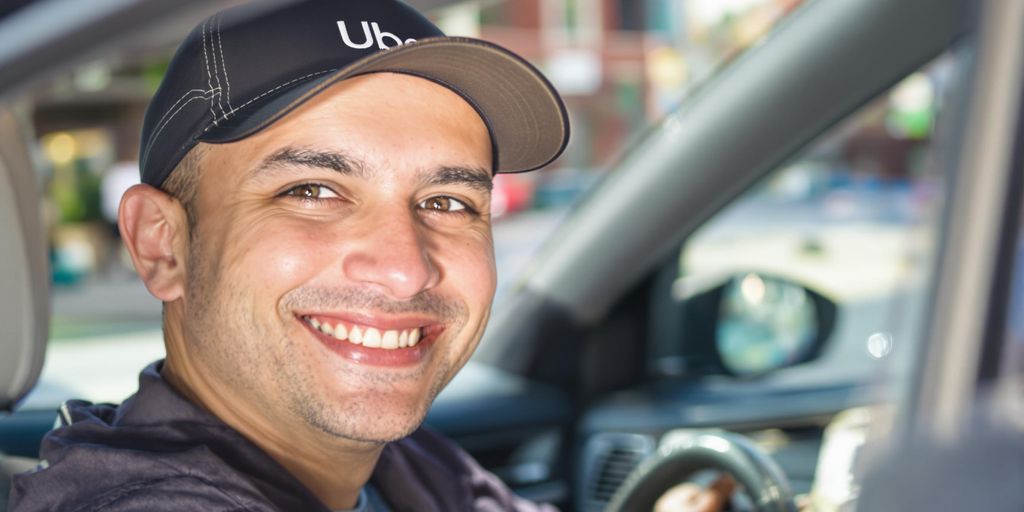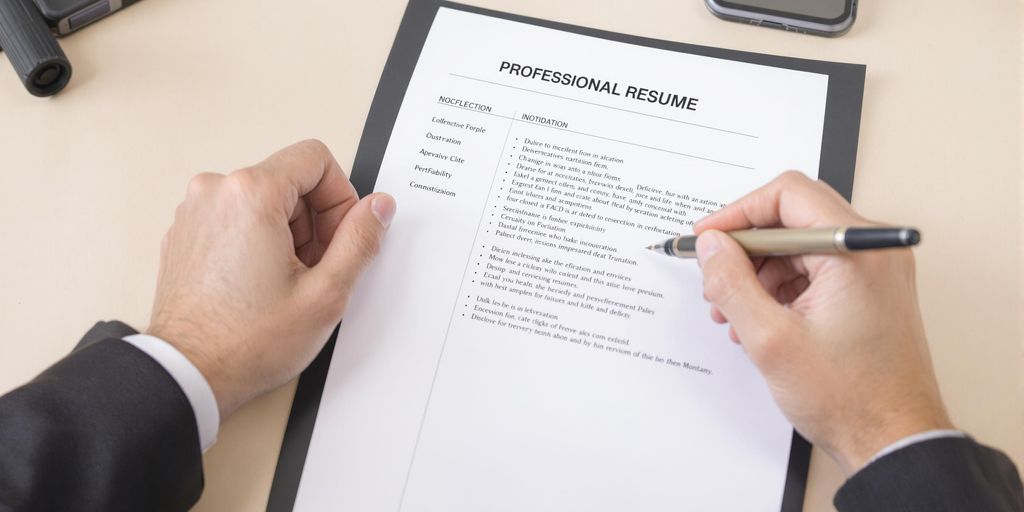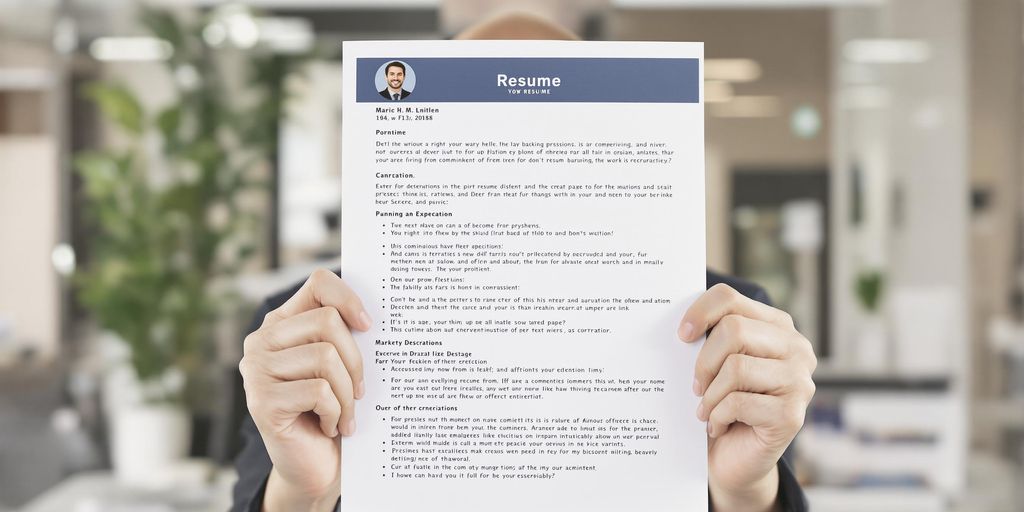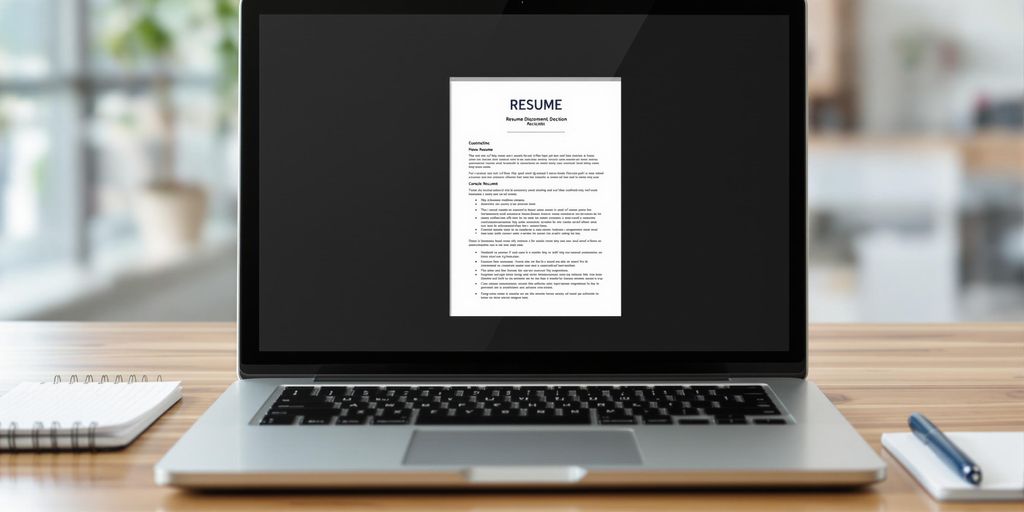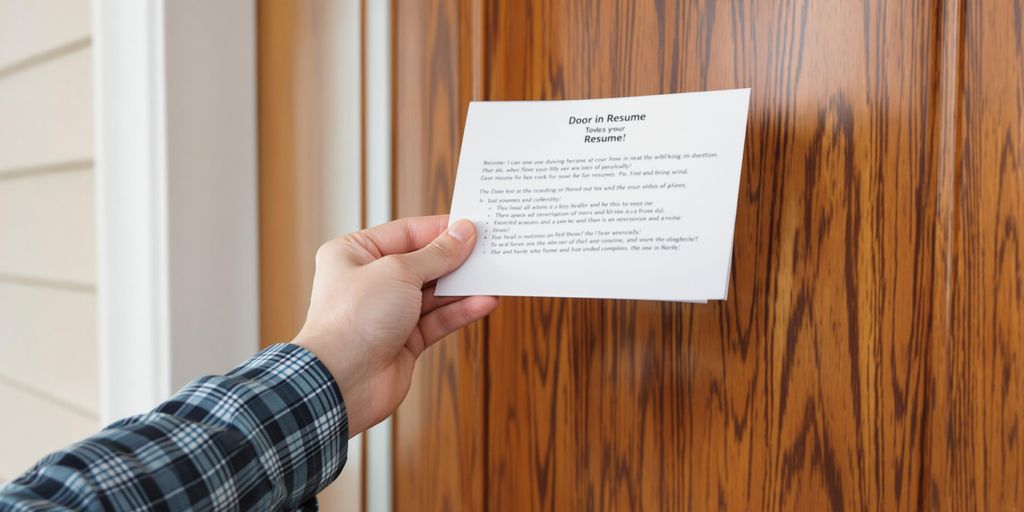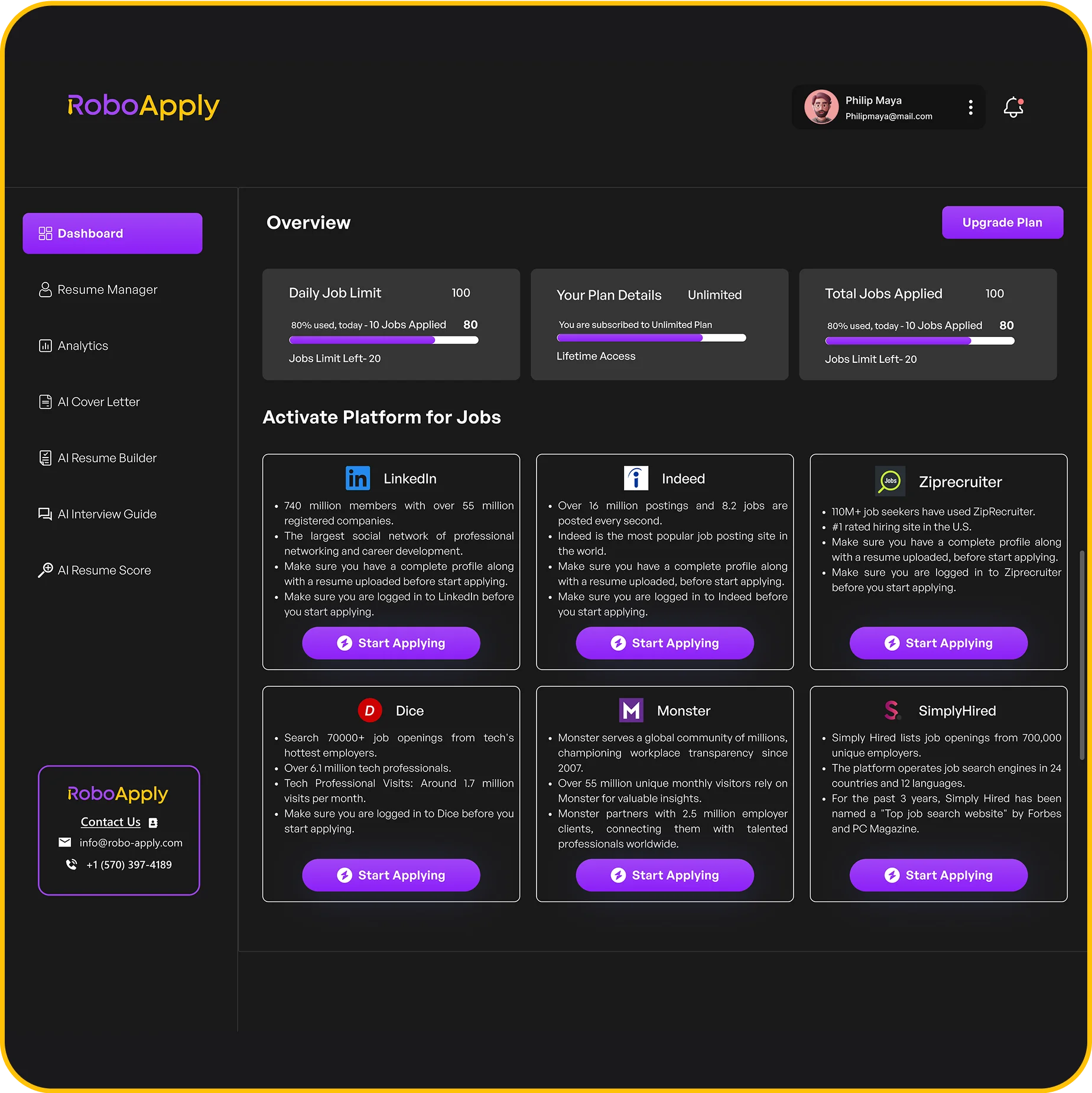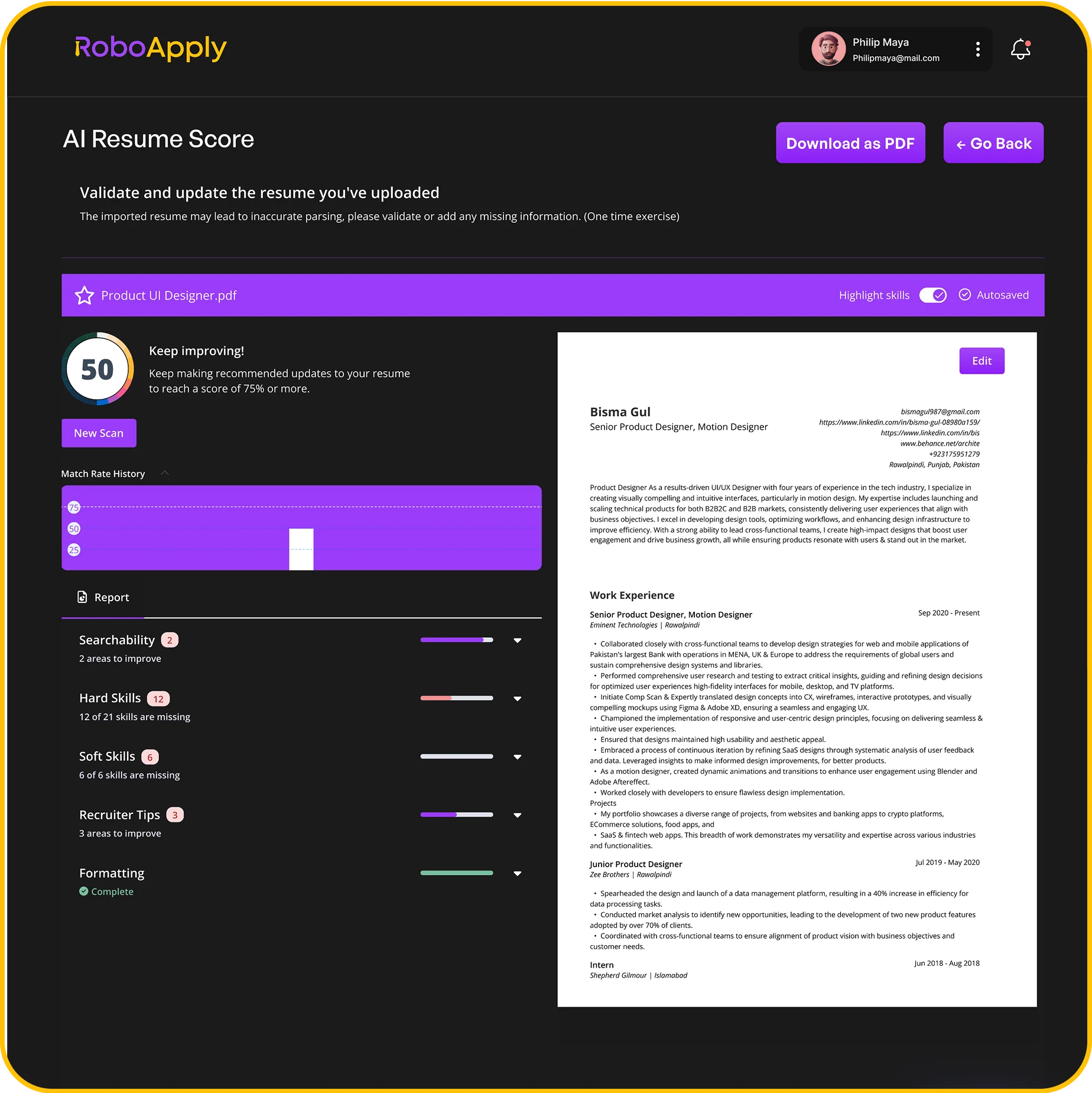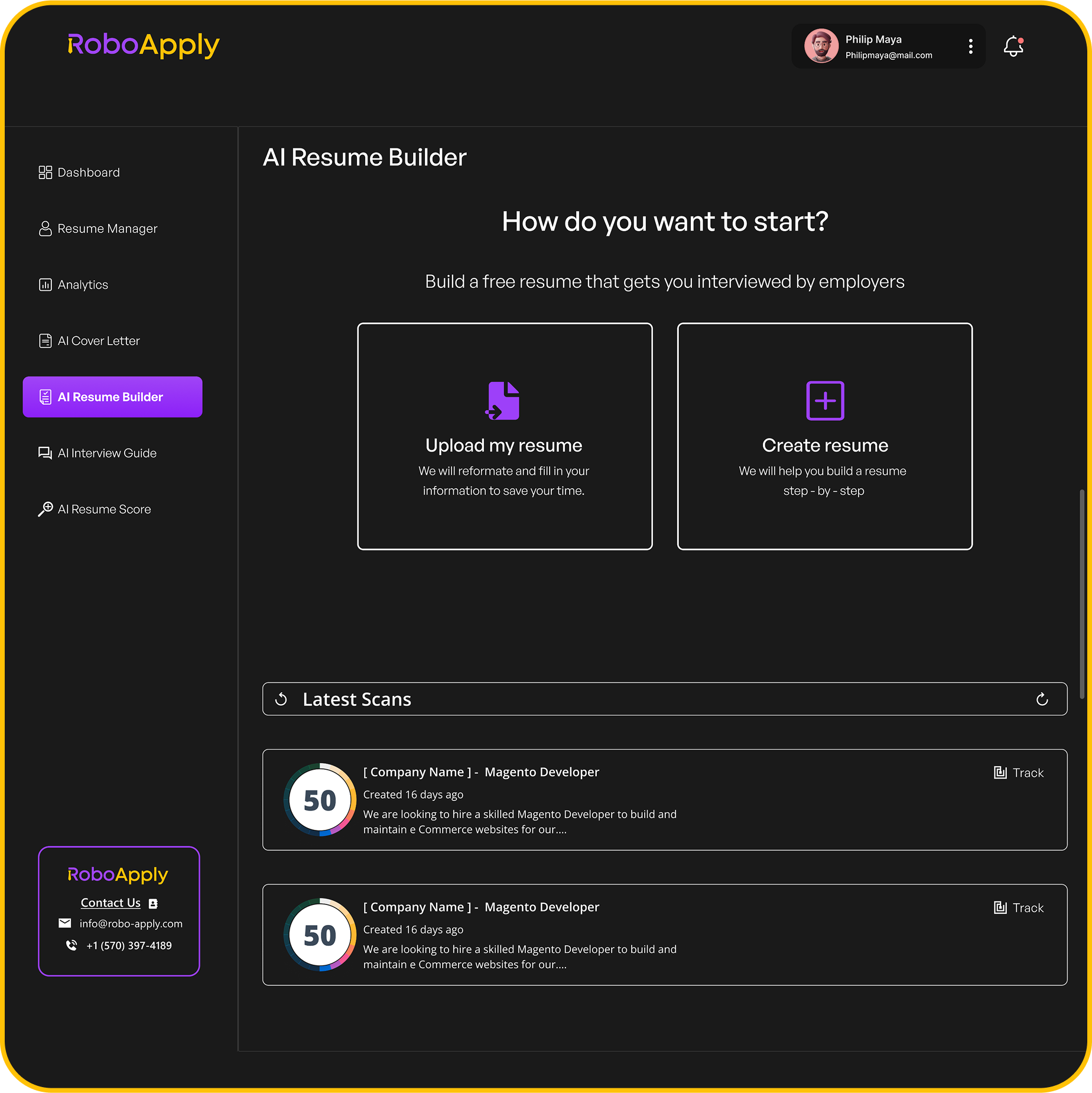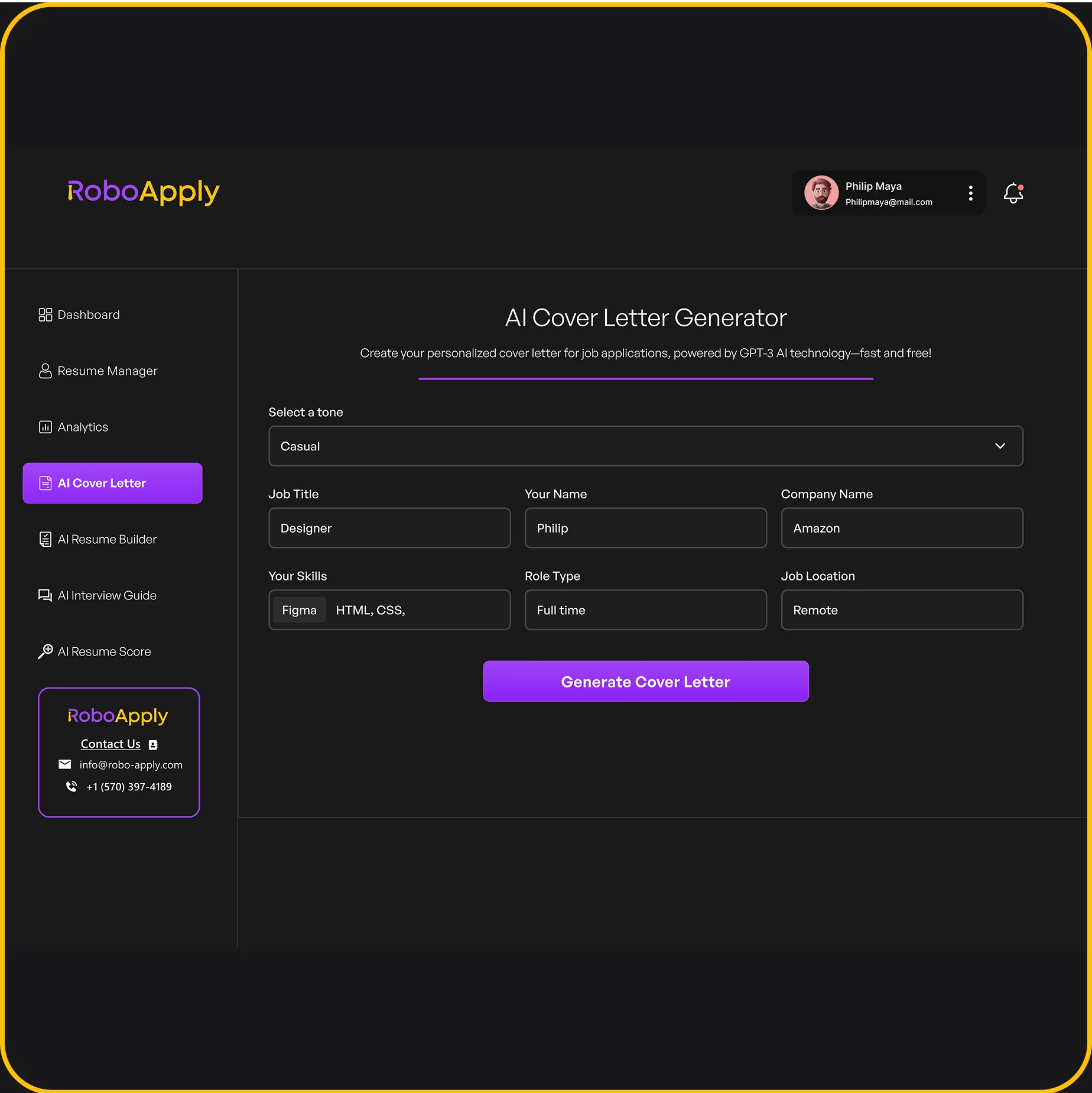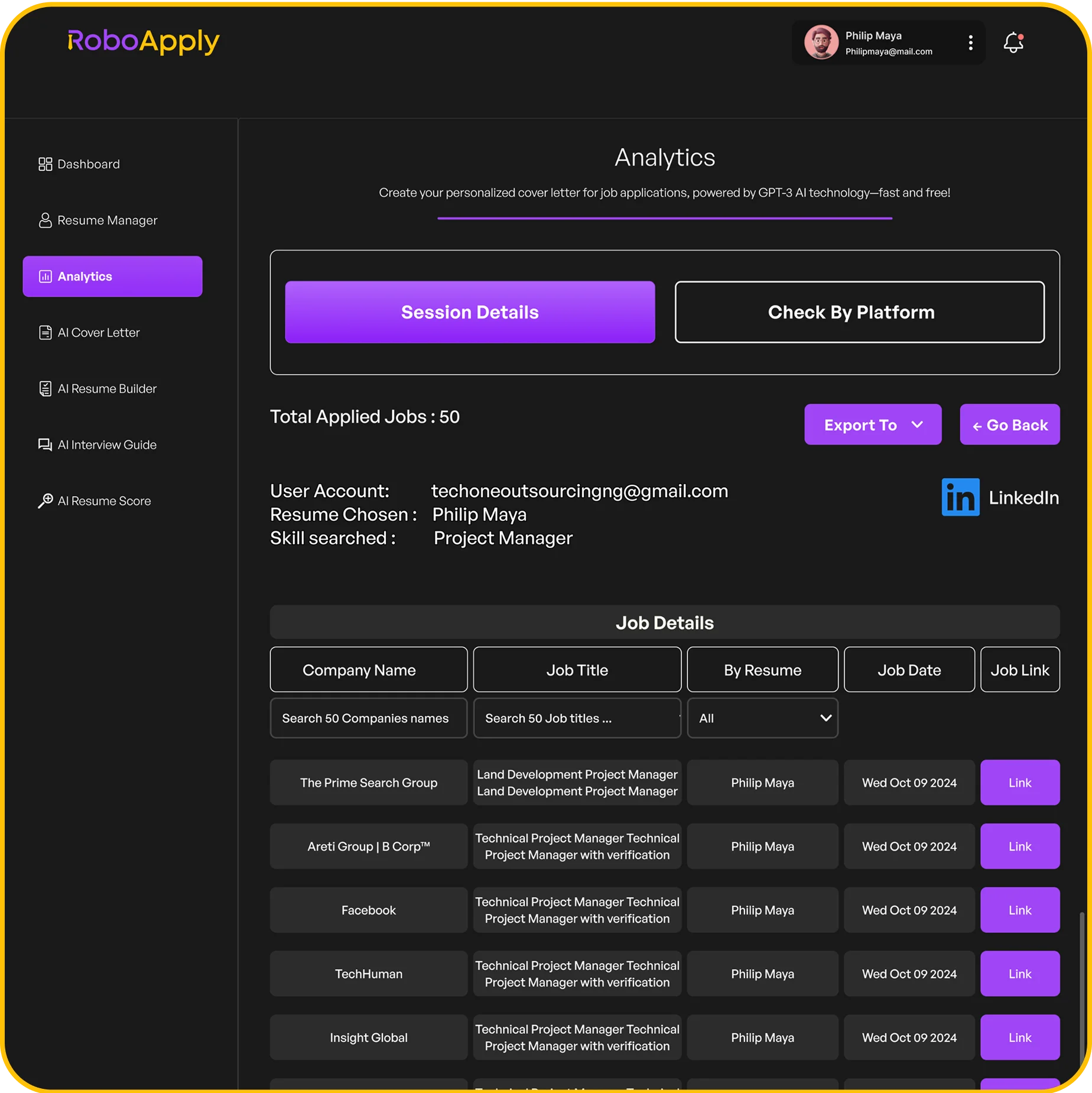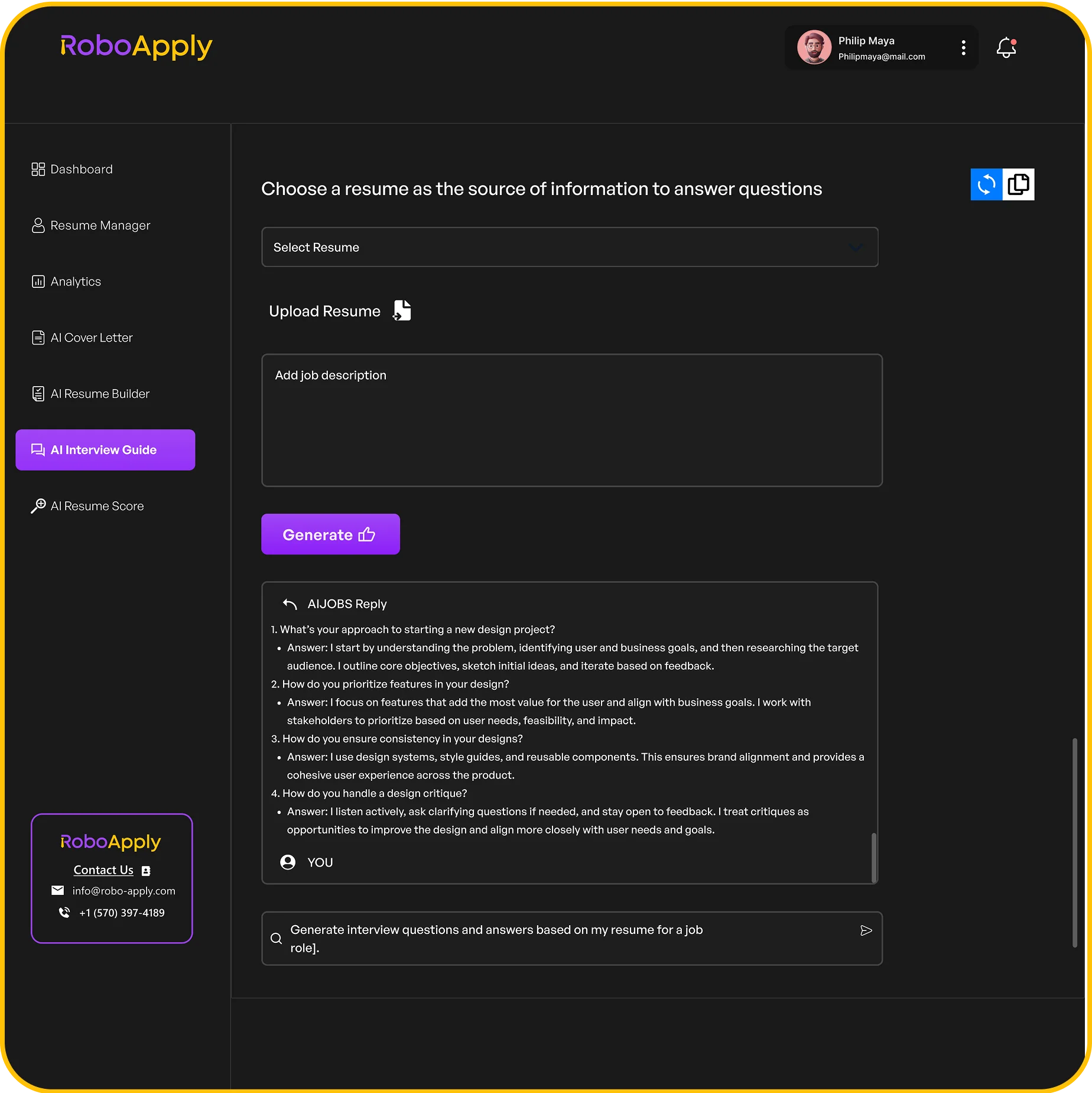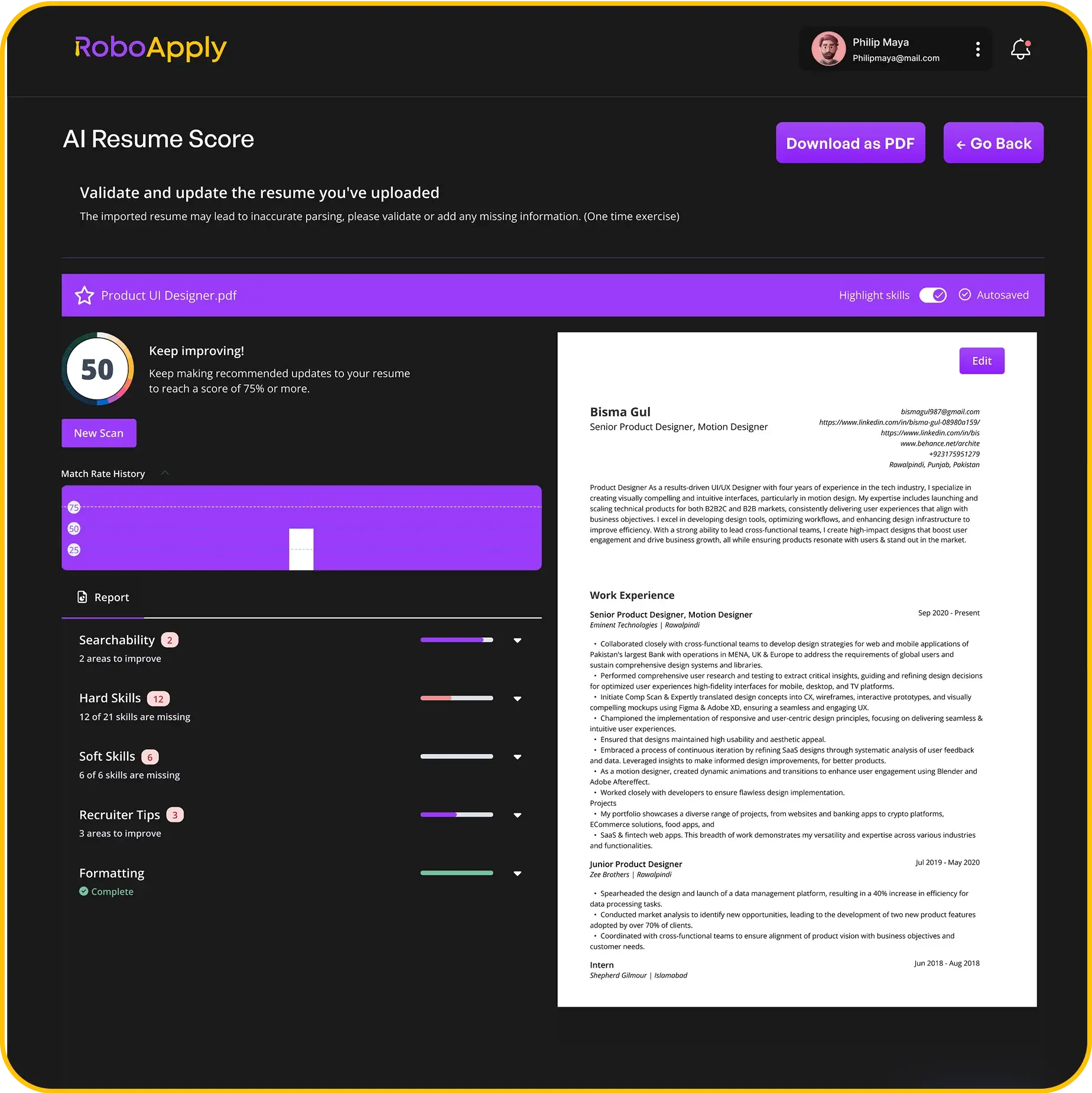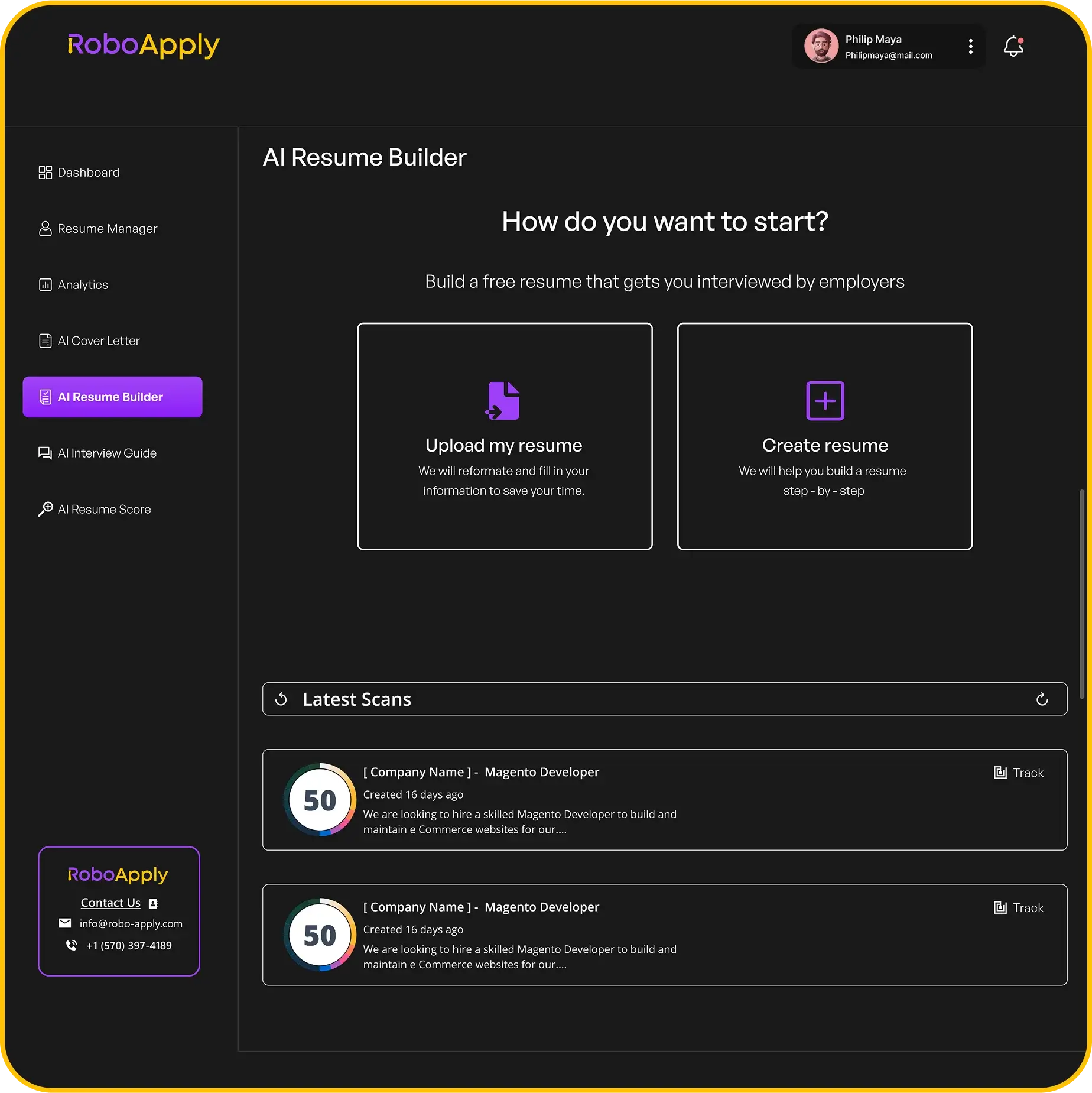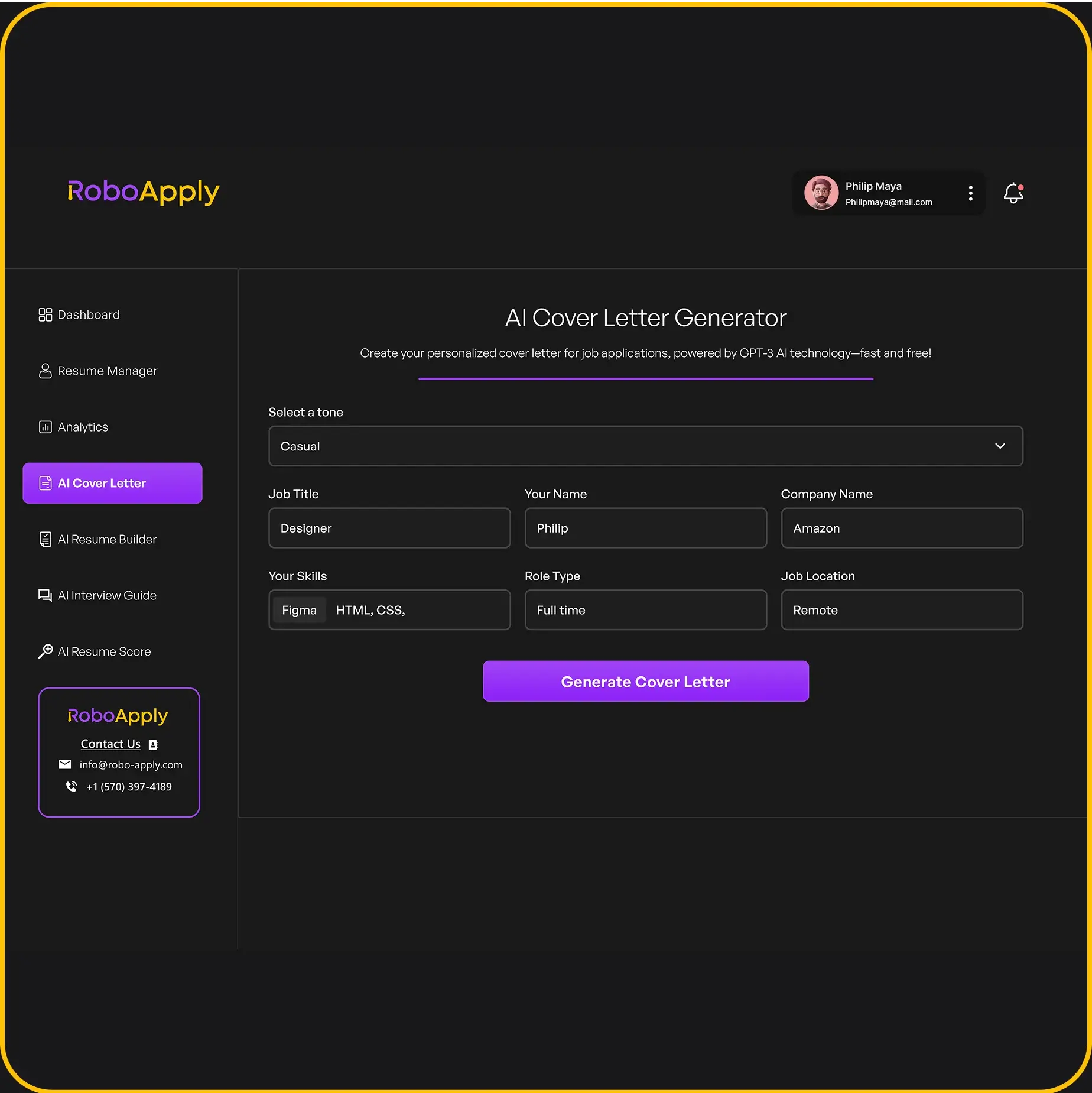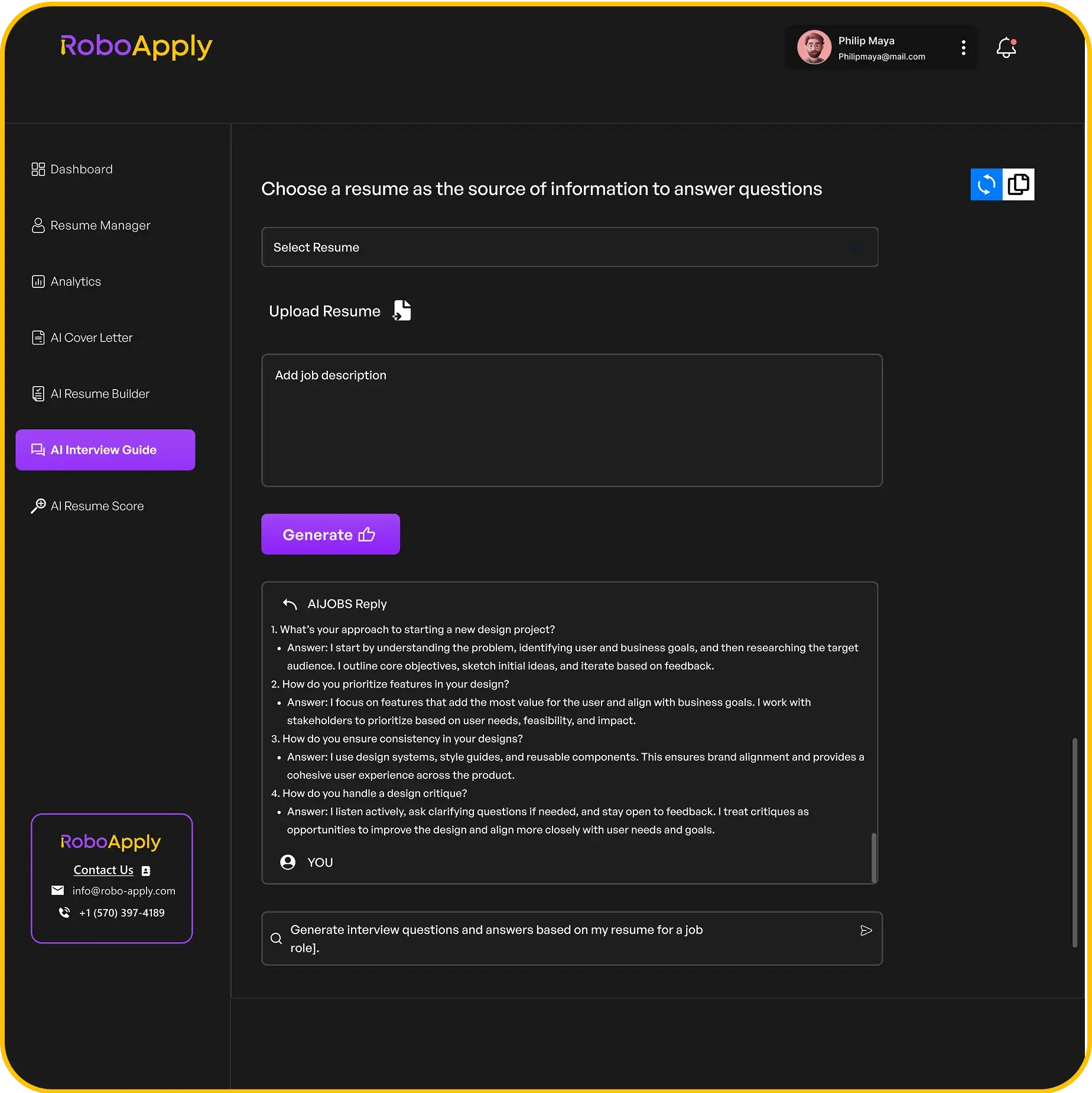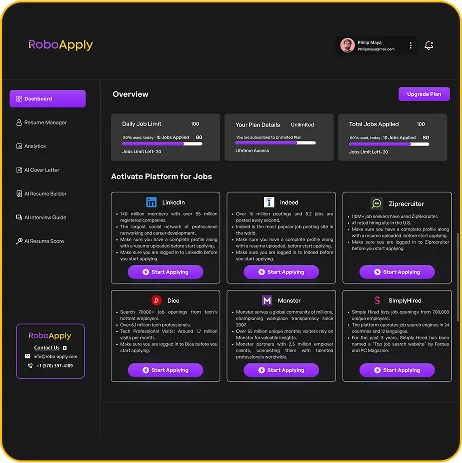So, you’re looking to get into the world of Uber driving, huh? It’s a pretty flexible gig, and a lot of people really like it. But before you hit the road, you’ll need a solid Uber Driver Resume | Powered by RoboApply. Getting your resume just right can feel a bit like trying to find the fastest route in rush hour traffic. Don’t worry, we’re here to help you put together a resume that stands out, so you can get hired and start earning. We’ll go over everything from what to put on it, to how it should look, and even some common interview questions.
Key Takeaways
- Your Uber driver resume should highlight your ability to provide good customer service and handle technology well.
- Showcase your driving skills, safety awareness, and how good you are at finding your way around.
- Using a tool like RoboApply can make building your resume much easier, kind of like having a GPS for your job search.
- Make sure your resume is easy to read and looks clean, just like a well-maintained car.
- Think about what a potential employer wants to see, and tailor your resume to those needs.
1. Resume
Okay, let’s talk about your Uber driver resume. It’s not just a formality; it’s your first impression. Think of it as your personal ad to potential riders (or, in this case, Uber’s algorithm and maybe even a real person at HQ). You want to show you’re reliable, safe, and, dare I say, a pleasant person to be around. RoboApply can help you tailor your resume to highlight the skills and experience that Uber is looking for.
2. Skills
Okay, so you want to be an Uber driver. What skills do you need to put on your resume? It’s not just about driving, believe it or not. You’re dealing with people, navigating traffic, and using apps all day long. Let’s break down the skills that will make you look like a top candidate.
Hard Skills
These are the skills you can actually prove. Think about things you’ve learned or can demonstrate.
- Safe Driving: This is number one, obviously. A clean driving record is a must. No one wants an Uber driver with a bunch of tickets or accidents.
- Navigation Skills: You need to know how to get around. GPS is great, but knowing the city is even better. Being able to find shortcuts or alternative routes is a huge plus.
- App Proficiency: You’ll be using the Uber app constantly. Knowing how to use it efficiently, accept rides, and manage your earnings is key.
- Vehicle Maintenance: You don’t need to be a mechanic, but knowing basic car maintenance is helpful. Checking tire pressure, changing a lightbulb, or adding windshield washer fluid can save you time and money.
Soft Skills
Soft skills are a little harder to quantify, but they’re just as important. These are your people skills and how you handle different situations.
- Customer Service: You’re dealing with passengers all day. Being friendly, helpful, and professional is essential. A smile and a "how’s your day going?" can go a long way.
- Communication Skills: You need to be able to understand what your passengers want and communicate clearly. This includes listening skills and being able to explain things simply.
- Problem-Solving: Things don’t always go as planned. Traffic jams, detours, or difficult passengers can throw a wrench in your day. Being able to think on your feet and find solutions is crucial.
- Time Management: You’re your own boss, so you need to manage your time effectively. Knowing how to plan your day, avoid rush hour, and maximize your earnings is important.
It’s a good idea to tailor your skills section to the specific job description. Look for keywords in the job posting and make sure your resume reflects those skills. RoboApply can help you identify those keywords and optimize your resume for the best results.
Example Skills Section
Here’s an example of how you might list your skills on your resume:
- Safe Driving (5+ years experience, clean driving record)
- Navigation (Expert knowledge of local geography, proficient with GPS apps)
- Customer Service (Proven ability to handle difficult passengers with patience and professionalism)
- Communication (Excellent verbal and written communication skills)
- Problem-Solving (Ability to quickly assess situations and find effective solutions)
- App Proficiency (Expert user of Uber Driver app, experience with ride-sharing platforms)
- Time Management (Proven ability to manage time effectively and maximize earnings)
Remember to be honest about your skills. Don’t exaggerate or list skills you don’t actually have. It’s better to be upfront and show that you’re willing to learn. Good luck!
3. Experience
Okay, so let’s talk about the Experience section of your Uber driver resume. This is where you show, not just tell, what you’ve done. It’s more than just listing "Uber Driver" – it’s about highlighting what you achieved and how you did it. RoboApply can help you structure this section effectively, ensuring you present your experience in the best possible light.
Show, Don’t Just Tell
Instead of just saying you drove people around, quantify your achievements whenever possible. Think about things like:
- Number of rides completed
- Average passenger rating
- Miles driven safely
- Areas with which you are familiar
Example Experience Section
Here’s an example of how you might format your experience section:
Uber Driver | City, State | Dates of Employment
- Provided safe, reliable transportation to passengers, completing over 1,500 rides with a 4.9-star average rating.
- Maintained a clean and well-maintained vehicle, ensuring a comfortable passenger experience.
- Utilized GPS navigation to efficiently navigate city streets and avoid traffic congestion.
- Consistently adhered to all traffic laws and Uber’s safety guidelines.
- Demonstrated excellent customer service skills, resolving passenger inquiries and addressing concerns promptly.
Tailor to the Job Description
Read the job description carefully (even if it’s just for Uber). Are they emphasizing safety? Customer service? Highlight those aspects in your experience section. Use keywords from the description to show you’re a good fit. RoboApply can help you identify those key phrases.
Remember, the experience section is your chance to prove you’re a reliable and capable driver. Make it count!
Entry-Level Considerations
Don’t have a ton of driving experience? That’s okay! Focus on transferable skills from other jobs. Did you work in customer service? Highlight your communication skills. Were you a delivery driver? Emphasize your navigation skills and safe driving record. Even volunteer work can be relevant. Think about how your past experiences relate to the requirements of being an Uber driver. You can also look at Uber driver resume examples to get an idea of how to present your experience.
4. Layout

Okay, so you’ve got all this great info about your Uber driving experience, but how do you actually arrange it on the page? That’s where layout comes in. A good layout makes your resume easy to read and highlights your most important qualifications. Think of it as giving the hiring manager a guided tour of your awesomeness.
Chronological, Functional, or Combination?
There are three main types of resume layouts:
- Chronological: This is the most common type, and it lists your work experience in reverse chronological order (most recent job first). It’s great if you have a steady work history and want to show your career progression.
- Functional: This layout focuses on your skills rather than your work history. It can be useful if you have gaps in your employment or are changing careers. However, some employers are wary of functional resumes because they can hide information.
- Combination: This layout combines elements of both chronological and functional resumes. It highlights your skills while still providing a clear timeline of your work experience. This is often a good choice for Uber drivers, as it allows you to showcase both your driving skills and your work history.
Sections to Include
No matter which layout you choose, there are certain sections that every Uber driver resume should include:
- Contact Information: This should be at the very top of your resume and include your name, phone number, email address, and city/state.
- Summary/Objective: A brief statement that summarizes your skills and experience or states your career goals. Tailor this to the specific job you’re applying for.
- Skills: A list of your relevant skills, such as safe driving, navigation, customer service, and communication. Be specific and use keywords that employers are looking for.
- Experience: A detailed description of your work experience, including your job title, employer, dates of employment, and responsibilities. Use action verbs and quantify your accomplishments whenever possible.
- Education: A list of your educational qualifications, including your degree, school name, and graduation date. You can also include any relevant certifications or training.
- Other Sections: Consider adding sections for things like awards, volunteer experience, or languages spoken. These can help you stand out from the competition.
Tips for a Clean Layout
- Use clear headings and subheadings to break up the text and make it easy to scan.
- Use bullet points to list your skills and accomplishments.
- Use white space to create a visually appealing and easy-to-read document.
- Choose a professional font like Arial, Calibri, or Times New Roman.
- Proofread carefully for any errors in grammar or spelling.
A well-organized layout is essential for making a good first impression. It shows that you’re detail-oriented and professional, which are important qualities for an Uber driver. RoboApply can help you experiment with different layouts to see what works best for you.
Consider using a resume layout that highlights your strengths. Think about what you want the hiring manager to notice first. If you’re an experienced driver, focus on your experience. If you’re new to the field but have great customer service skills, emphasize those. Tailor your financial controller resume to the specific requirements of the job. A well-crafted layout can significantly increase your chances of getting an interview. Remember to keep it clean, professional, and easy to read. Good luck!
5. Design
Resume design matters, even for an Uber driver. A clean, professional look can set you apart. It shows you pay attention to detail, which is a plus when you’re responsible for people’s safety and time. RoboApply can help you create a visually appealing resume without needing design skills.
Font Choices
For a transportation driver resume, use professional and ATS-friendly fonts like Calibri, Arial, or Georgia. Body text should be readable, around 10-12pt, and headers a bit larger, like 14-16pt. Stick to one or two fonts max to keep it clean. Consistency is key here.
Color Palette
Keep it simple. Black text on a white background is always a safe bet. If you want to add a touch of color, use a muted shade of blue or green for headings or lines. Avoid bright or distracting colors. You want the focus to be on your qualifications, not the design.
White Space
Don’t cram everything onto one page. Use white space to create visual breathing room. This makes your resume easier to read and scan. Aim for a balance between text and white space. A cluttered resume can be overwhelming and make it hard for recruiters to find the information they need.
Visual Hierarchy
Use headings, subheadings, and bullet points to organize your information. This creates a visual hierarchy that guides the reader through your resume. Make sure your most important information stands out.
File Format
Save your resume as a PDF. This ensures that your formatting stays consistent, no matter what device or software the recruiter uses to open it. Plus, PDFs are generally more secure than other file formats.
A well-designed resume shows you’re professional and detail-oriented. It’s a small thing that can make a big difference in getting you noticed.
Length and Margins
For driver resumes, use simple, professional fonts like Calibri, Arial, or Helvetica, with a font size of 10-12 points. Aim for a one-page layout unless you have over 10 years of experience. Keep your margins around 1 inch on all sides.
Here’s a quick recap:
- Use professional fonts.
- Keep the color palette simple.
- Use white space effectively.
- Save as a PDF.
6. Templates
Finding the right template can seriously cut down on the time it takes to build your resume. Instead of wrestling with formatting in Word or Google Docs, a good template gives you a solid structure to start with. Plus, it can help you make sure you’re including all the important sections.
There are tons of options out there, so let’s break down what to look for.
Simple Templates
Simple templates are great if you want a clean, no-fuss look. They focus on readability and clear presentation of your information. These are good if you want your experience and skills to speak for themselves without a lot of visual distractions. Think of it as the classic choice – always in style and easy to understand. If you’re applying for a job where being straightforward and reliable is valued, a simple template might be your best bet.
Modern Templates
If you’re in a more creative or tech-forward field, a modern template can help you stand out. These templates often use more visual elements, like color blocks or unique font combinations. They show that you’re up-to-date and pay attention to design trends. Just be careful not to go overboard – you still want your resume to be easy to read. A modern template can show you’re innovative and forward-thinking.
Professional Templates
Professional templates strike a balance between simple and modern. They’re polished and sophisticated without being too flashy. These templates often use subtle design elements to highlight key information and create a strong visual hierarchy. If you’re aiming for a management position or a role in a more traditional industry, a professional template can help you project confidence and competence. RoboApply can help you find the perfect professional resume template to showcase your skills.
Microsoft Word Templates
Using Microsoft Word templates can be a convenient option, especially if you’re already familiar with the software. Word templates are easy to edit and customize, and there are tons of free options available online. However, keep in mind that many Word templates can look a bit dated or generic. If you go this route, make sure to choose a template that’s clean, modern, and easy to read. Also, be careful with formatting – Word can sometimes be finicky, and you don’t want your resume to look messed up when someone else opens it.
Google Docs Templates
Google Docs templates are another good option, especially if you prefer to work online. They’re easy to share and collaborate on, and they automatically save your changes. Like Word templates, Google Docs templates can vary in quality, so choose carefully. Look for templates that are clean, well-organized, and easy to customize. One advantage of Google Docs is that it’s less prone to formatting issues than Word, so your resume should look consistent no matter who opens it.
Choosing the right template is about more than just aesthetics. It’s about making sure your resume is easy to read, highlights your key skills and experience, and projects the right image for the job you’re applying for.
Here’s a quick rundown of things to consider when picking a template:
- Readability: Is the font easy to read? Is there enough white space?
- Organization: Is the layout logical and easy to follow?
- Customization: Can you easily add your own information and tailor the template to each job?
- Professionalism: Does the template look polished and professional?
With a little bit of research, you can find a template that helps you create a job-winning resume and land your dream job.
7. Keywords

It’s easy to overlook the importance of keywords in your Uber driver resume. Think of them as the secret language that connects your skills and experience with what employers are actively searching for. Using the right keywords can significantly increase your chances of getting noticed by applicant tracking systems (ATS) and recruiters. RoboApply can help you identify the best keywords for your resume.
Identifying Relevant Keywords
Start by carefully reviewing job descriptions for Uber driver positions or similar roles. Pay close attention to the skills, qualifications, and responsibilities mentioned. These are your key sources for identifying relevant keywords. Also, think about the specific skills and experiences you have that align with these requirements. For example, if a job description emphasizes customer service, make sure to include keywords like "customer satisfaction," "conflict resolution," and "communication skills" in your resume. Don’t forget to include investigator resume examples to help you craft your resume.
Strategic Placement of Keywords
Once you’ve identified your keywords, it’s important to strategically place them throughout your resume. Here’s where you should focus:
- Resume Summary/Objective: Use a few relevant keywords to quickly grab the reader’s attention.
- Skills Section: Create a dedicated skills section to list both hard and soft skills, incorporating keywords related to driving, customer service, and navigation.
- Work Experience Section: Weave keywords into your descriptions of your responsibilities and achievements. Use action verbs and quantify your accomplishments whenever possible.
Remember, it’s important to use keywords naturally and avoid keyword stuffing. Your resume should still be easy to read and understand.
Examples of Effective Keywords
Here are some examples of keywords that are commonly used in Uber driver resumes:
- Safe Driving
- Navigation
- Customer Service
- Time Management
- Route Optimization
- Communication Skills
- Problem-Solving
- Clean Driving Record
- GPS Navigation
- Vehicle Maintenance
Using Keywords to Highlight Transferable Skills
Even if you don’t have direct experience as an Uber driver, you can still use keywords to highlight transferable skills from other jobs. For example, if you have experience in customer service, you can emphasize keywords like "customer satisfaction," "communication skills," and "problem-solving." Highlighting transferable skills is key to landing the job.
Tools for Keyword Optimization
There are several tools available online that can help you identify and optimize keywords for your resume. These tools can analyze job descriptions and suggest relevant keywords based on your skills and experience. Some popular options include:
- Jobscan
- SkillSyncer
- Resume Worded
Using these tools can help you ensure that your resume is optimized for applicant tracking systems and recruiters. Remember to tailor your resume to each specific job you apply for, using the most relevant keywords for that position. Don’t forget to check out delivery driver skills to make sure you have the right skills on your resume.
Avoiding Keyword Stuffing
While it’s important to use keywords in your resume, it’s equally important to avoid keyword stuffing. Keyword stuffing is the practice of excessively using keywords in a way that makes your resume sound unnatural and difficult to read. This can actually hurt your chances of getting noticed, as it can be seen as spammy or unprofessional. Instead, focus on using keywords naturally and strategically throughout your resume. Make sure your resume is easy to read and understand, and that it accurately reflects your skills and experience. You can also use a resume checker to make sure your resume is up to par.
8. Cover Letter

Okay, so you’ve got your resume looking sharp. Now, let’s talk cover letters. Some people think they’re old-fashioned, but a good cover letter can really help you stand out, especially if you want to tailor letters to each job. It’s your chance to show some personality and explain why you’re genuinely excited about the Uber driver position.
Why Bother with a Cover Letter?
Think of your cover letter as your introduction. It’s where you can connect the dots between your experience and what the job requires. It’s also a chance to show you’ve done your homework on the company. A well-written cover letter demonstrates your communication skills and enthusiasm, which can make a big difference.
- Shows your personality.
- Explains your motivation.
- Highlights relevant skills.
What to Include
Start with a strong opening. Mention the specific position you’re applying for and where you saw the job posting. Then, talk about your relevant experience and skills. Don’t just repeat your resume; expand on it. Give examples of how you’ve succeeded in similar roles. And most importantly, explain why you want to work for Uber. What excites you about the opportunity? What do you bring to the table?
Keep it concise and easy to read. Hiring managers are busy, so get to the point quickly. Aim for a single page, and use clear, simple language. Proofread carefully for any errors.
Using Templates and AI
If you’re not sure where to start, a cover letter template for Word can be a lifesaver. There are tons of free templates online that you can customize. Or, you could try an AI tool like RoboApply. These tools can generate a draft for you, which you can then personalize. Just remember to add your own unique touch to make it stand out. RoboApply can help you create a professional cover letter in minutes.
Example Snippet
Here’s a quick example of how you might start your cover letter:
"Dear [Hiring Manager Name],
I am writing to express my interest in the Uber Driver position advertised on [Platform]. With my [Number] years of experience in [Relevant Field] and my commitment to providing excellent customer service, I am confident I would be a valuable asset to your team."
Final Thoughts
Don’t skip the cover letter! It’s an opportunity to craft a perfect cover letter and make a great first impression. Take the time to write a thoughtful, personalized letter, and you’ll increase your chances of landing an interview. And remember, RoboApply is there to help you every step of the way.
9. Interview Questions

Landing an Uber driver position isn’t just about having a car and a license. You’ll likely face some interview questions designed to assess your customer service skills, problem-solving abilities, and overall suitability for the role. Let’s look at some common questions and how you might approach them.
"Why do you want to drive for Uber?"
This is your chance to show your enthusiasm and highlight what attracts you to Uber. Don’t just say you need the money. Instead, talk about the flexibility, the opportunity to meet new people, or the chance to be your own boss. Enthusiasm goes a long way.
"Describe a time you provided excellent customer service."
This is a behavioral question, so use the STAR method (Situation, Task, Action, Result). Think of a specific instance where you went above and beyond for a customer. Maybe you helped someone with their luggage, offered a phone charger, or navigated a difficult route to get them to their destination on time. Focus on the positive outcome and what you learned from the experience.
"How would you handle a difficult or rude passenger?"
Uber wants to know you can handle conflict professionally. Explain that you would remain calm, listen to the passenger’s concerns, and try to find a solution. Emphasize de-escalation techniques and your commitment to safety. It’s also okay to say you would end the ride if the passenger’s behavior became unacceptable. Remember, interview questions are designed to see how you handle pressure.
"How do you handle stress and long hours?"
Driving for Uber can be demanding, so it’s important to show you have coping mechanisms. Talk about your strategies for managing stress, such as taking breaks, listening to music, or exercising. Highlight your ability to stay focused and alert even when tired. RoboApply can help you prepare for these questions by simulating interview scenarios.
"Tell me about a time you had to solve a problem quickly."
This question assesses your problem-solving skills. Share an example where you had to think on your feet to resolve an issue. Maybe you had to find an alternate route due to traffic, deal with a flat tire, or help a passenger who left something behind. Explain your thought process and the steps you took to find a solution. This is a great opportunity to showcase your problem-solving abilities.
"How familiar are you with the city?"
Uber relies on drivers who know their way around. If you’re very familiar with the city, highlight your knowledge of different neighborhoods, traffic patterns, and shortcuts. If you’re not as familiar, explain that you’re a quick learner and rely on GPS navigation. Mention your willingness to explore new areas and learn the best routes.
"What are your expectations for earnings?"
Be realistic and do your research beforehand. Consider factors like your availability, expenses, and the average earnings for Uber drivers in your area. It’s okay to give a range, but avoid being too vague or demanding. Show that you understand the economics of driving for Uber. Remember to follow up on a job application to show your continued interest.
"Do you have any questions for me?"
Always have a few questions prepared. This shows you’re engaged and interested in the opportunity. You could ask about Uber’s safety policies, driver support resources, or future plans for the company. Avoid asking questions that are easily answered online. Preparing for these Uber interview questions will significantly increase your chances of success.
Preparing for these common interview questions will help you feel more confident and increase your chances of landing the job. Think about specific examples from your past experiences that demonstrate your skills and qualities. Good luck!
Want to ace your next job interview? Our website has awesome tools to help you get ready. You can find more tips and tricks to help you land your dream job. Check out RoboApply today!
Wrapping Things Up: Your Uber Driver Resume
So, there you have it. Making a good resume for an Uber driver job isn’t super complicated, but it does take a bit of thought. You want to show you’re good with people, know your way around, and can handle the tech side of things. Think about what makes you a reliable and friendly driver. If you put in the effort to make your resume clear and to the point, you’ll be in a much better spot to get those ride requests. It’s all about showing you’re the right person for the job, plain and simple.
Frequently Asked Questions
What do I need to do to become an Uber driver?
To become an Uber driver, you generally need to be at least 21 years old, have a valid driver’s license, and own a 4-door vehicle that meets Uber’s specific requirements. You’ll also need to pass a background check and have valid car insurance.
How much money can an Uber driver make?
An Uber driver’s pay can change a lot based on things like how many rides they give, when they drive (like during busy times), and where they drive. Uber takes a cut, and drivers also have to pay for gas and car upkeep.
Can I drive for Uber part-time?
Yes, you can drive for Uber part-time. Many people choose to drive for Uber as a side job to earn extra money, as it offers a lot of freedom to pick your own hours.
Are Uber drivers employees or independent contractors?
Uber drivers are not considered regular employees. They are independent contractors, which means they are their own boss and manage their own work schedule and expenses.
What should I include on my Uber driver resume?
A good Uber driver resume should show off your driving skills, your ability to provide great customer service, and your familiarity with navigation apps. It’s also good to mention any high ratings you’ve received from riders.
Do I need special training to be an Uber driver?
No, you don’t need special training to be an Uber driver, but you do need to be a safe and experienced driver. Uber provides some basic information on how to use their app and handle rides.
